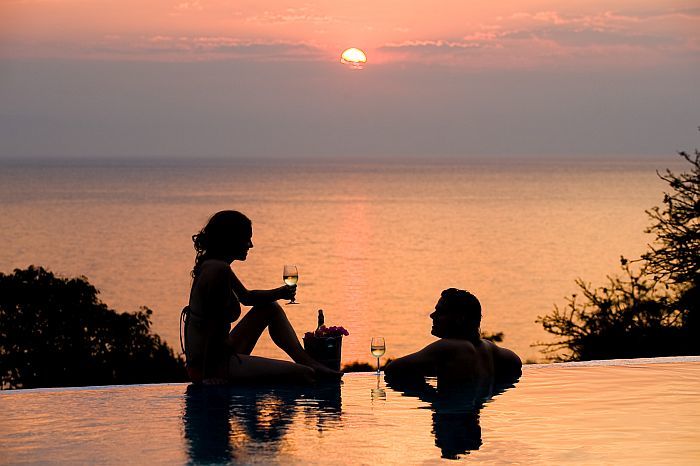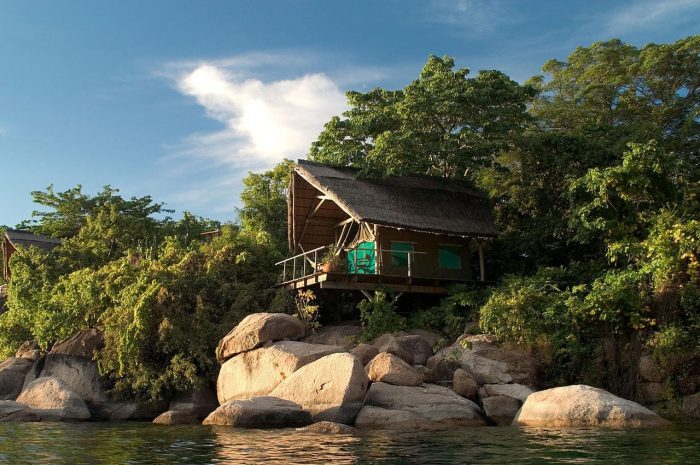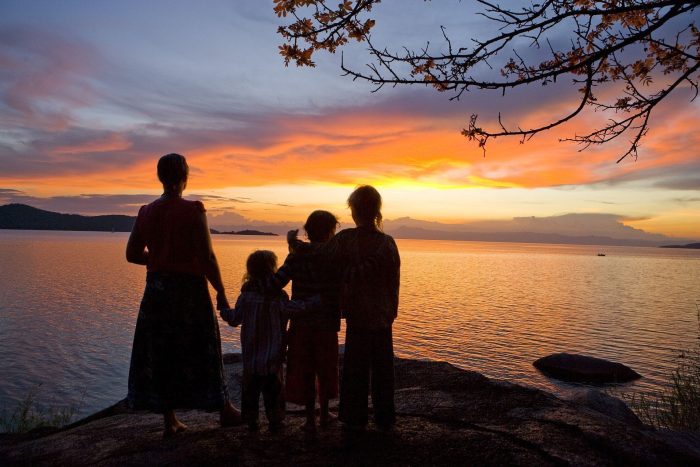Lake Malawi is Malawi’s stellar attraction, great for kayaking, diving and yachting.
March to September
Lake Malawi is the stellar attraction of a Malawi safari, enriching every aspect of its life. A stay at one of the Lake Malawi resorts is the ideal wind-down at the end of your Malawi safari. Effectively it doubles as a ‘beach stay’. The sandy shores of Lake Malawi are by far the closest “beach” to the prime game reserve of South Luangwa and Kafue.
This vast expanse of bright blue water makes up some 20% of the whole of Malawi! Over 2,000 species of fish occur in the crystal-clear waters of Lake Malawi. This includes the colourful endemic cichlids that are easily spotted when snorkelling.
A quirky off-the-beaten-track destination on Lake Malawi is Likoma Island. This is a remote island near the Mozambique border with a cathedral which would be at home in Britain. All mixed in with a laid back tropical island ambiance.

The beautiful mountainous terrain surrounding much of Lake Malawi doesn’t make for productive farming. So the lake itself is a vital part of the Malawi economy. Fish such as chambo and kapenta make up the main protein source for the lakeside people. So at night, the lake is sparkling with the tiny lights of the fishermen using lights and paddle bangs to attract the fish.
We arrange trips to more than 100+ destinations throughout the African continent.
I love to be close to nature, in a wild and remote place, but I also like a bit of comfort. Mumbo Island Lodge is one of those special places in Africa which offer just the right balance between rusticity and comfort. Mumbo Island on Lake Malawi is one such place.

It sells itself as a Robinson Crusoe destination. Well all I can say is that if Robinson Crusoe ever had experienced Mumbo Island, he might not have rated a return to ‘civilization’. This is a perfect place to chill out - completely away from it all but still with access to running water, stunning beaches, delicious home-cooked food and a campfire in the evening. (Needed only for ambience and certainly not for heat-generation.)
The drive from Lilongwe to the village of Cape Maclear takes 3-4 hours. The roads are in good condition but you cannot drive fast because of people walking on the side of the road and goats on a death wish. The second half of the drive is particularly scenic as you descend down the Golomoti pass from the Malawi highlands into the Great Rift Valley in which Lake Malawi lies. Along the road are toy stalls where master craftsmen sell intricately carved wooden toys: cars, landrovers, tractors, bicycles, motorbikes – every little child's dream. One stall had an amazing bicycle with 27 working gears
On arrival at Cape Maclear, we transferred to our boat for the 45 minute boat cruise to the stunningly beautiful Mumbo Island. What a special place with a lovely ambience. It comprises 5 reed and thatch chalets on their own little island, accessed by a suspension bridge from the main island, plus one family unit in the forest. The five view chalets are very simply furnished with beds, tables, chairs and of course that all-important hammock. A short distance away is your own private bathroom with eco-loo and basin under thatch and an alfresco bucket shower which is filled with hot water whenever you want it. Note that the family tents are in the forest (as a child could easily fall from the boulders outside the view tents) so its fair to say that this does NOT have the same ambience.
The main area is very simple (perhaps a little dark) with a small reading/sitting room, dining area and bar. Below is a lovely sandy beach in a pretty little cove with hammocks under some much needed shady trees & sun loungers.

The guided walk around the island was lovely as well. I recommend trainers as the paths are steep in places and so it’s good to have some grip. Lovely tranquil forest paths lead you to view points down onto Lake Malawi.
There is no electricity or internet connection on the island. Cooking is by gas and lighting is provided by wind-up torches and a solar powered light for reading in bed. Hot water is provided by a solar geyser.
We had a stunning, if eventful, kayaking trip around the island. The wind had got up so that the kayaking was not as relaxing as we were expecting. My partner and I even managed to fall off the kayak much to our amusement. Have you ever tried to get back onto a kayak when you are laughing hard? It’s not easy. But our kayaking guide was right there with a helping hand – and amazingly, a straight face - and we were on our way again. The trip around the island takes about an hour and is very safe as you are always close to the shoreline (in case you are as accident prone as we were).
Later we enjoyed a more tranquil boat cruise around the headland to enjoy some sundowners as we watched the sun setting over Lake Malawi. I also had a happy time snorkelling around the boulders and enjoying all the fish. This is not the sub-tropical Indian Ocean in terms of variety and size of fish, but certainly a very pleasant snorkelling experience
